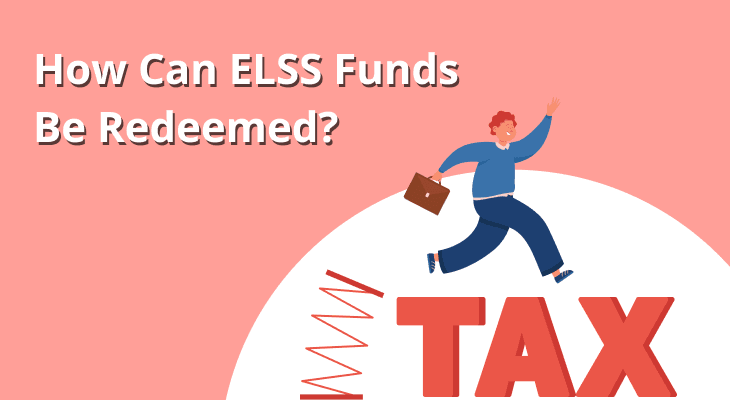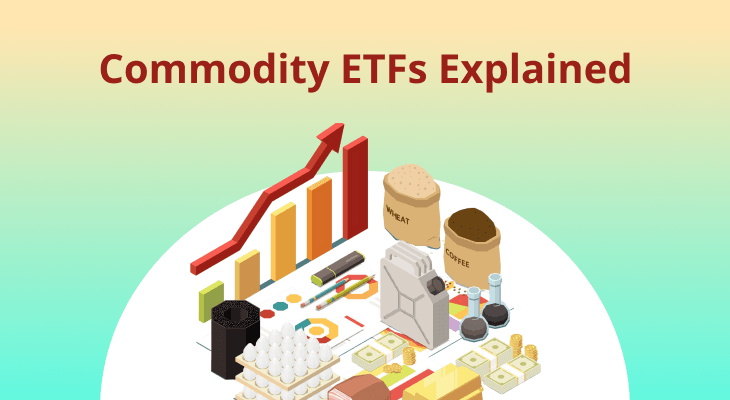
How Can ELSS Funds Be Redeemed? Rules for ELSS Withdrawal
Equity-linked Savings Schemes (ELSS) are a type of mutual fund in India that provide tax relief under Section 80C of the Income Tax Act. ELSS have a three-year lock-in period, during which the amount invested cannot be withdrawn. It is important for investors to know the ELSS redemption process, rules, and tax implications while making their financial plans. This article explores the intricacies of ELSS mutual fund redemption, shedding light on the procedures and considerations.
Understanding ELSS Mutual Funds
Equity Linked Savings Schemes (ELSS) mutual funds hold a distinct position within the universe of tax-saving investments in India. As diversified equity schemes, ELSS funds invest largely in equity and equity-related securities. Therefore, they are apt for those who are willing to take risks with the market and want to generate long-term capital appreciation. What distinguishes ELSS is its blend of wealth creation opportunities and tax relief, providing a systematic means of building one's financial portfolio with the added advantage of income tax relief.
To get a better idea of ELSS mutual funds, let's discuss their salient features and implications in detail:
Key features of ELSS mutual funds
- Tax benefits under Section 80C
ELSS investments are eligible for a tax deduction of up to ₹1.5 lakh under Section 80C of the Income Tax Act. This can reduce the investor’s taxable income, potentially lowering their overall tax liability. The tax benefit applies only to the amount invested, not to the returns generated, and is available in the financial year in which the investment is made. - Mandatory lock-in period of three years
Every ELSS investment—whether lump sum or through SIP—comes with a fixed lock-in of three years. This is the shortest lock-in period compared to other tax-saving options such as Public Provident Fund (PPF) or National Savings Certificate (NSC). However, it's important to note that in the case of SIPs, each instalment is treated as a separate investment and is subject to its individual three-year lock-in. - Investment modes: Lump sum and SIP
ELSS allows two primary ways of investing: a one-time lump sum or periodic contributions through SIP. While lump sum investing is straightforward, SIPs offer the benefit of rupee-cost averaging and make it easier to build a habit of disciplined savings. This flexibility ensures that different types of investors can participate according to their financial comfort. - Market-linked growth potential
As equity-based, ELSS funds invest in the market, providing the prospect for long-term capital gain. Though having market risks, over the long run, their performance can exceed that of conventional fixed-income tax-saving options. Nonetheless, since there is no assurance of returns, it's better to pair ELSS with an appropriate risk appetite. - Diversified exposure
ELSS funds invest across sectors and market capitalisations and offer diversified exposure to investors, which aids risk reduction since unsatisfactory performance in one section can be made up by one in another. - Professional fund management
Like all mutual funds, ELSS schemes are managed by experienced fund managers who make investment decisions based on research and market trends. This takes the burden off individual investors to track the markets or select stocks. - Capital gains taxation
Although ELSS funds are tax-saving at the time of investment, any gains made on redemption are treated as long-term capital gains (LTCG). In a fiscal year, gains over one lakh rupees are subject to 10% taxation without indexation.
Understanding these essential features of ELSS mutual funds helps investors align their choices with long-term financial goals and risk tolerance. The combination of tax benefits and potential equity returns makes ELSS a compelling instrument, but only when approached with clarity and informed planning.
How to Redeem ELSS Mutual Funds?
Redeeming ELSS mutual funds requires a clear understanding of the lock-in rules and the specific steps based on how the investment was made. There are different methods for redeeming ELSS funds, depending on whether you invested directly through a fund house, via an online platform, or offline through an intermediary. Redemption does not involve any physical delivery of documents if you’ve invested digitally and completed your KYC. Once the lock-in period is complete, and your KYC is up-to-date, the process of ELSS redemption becomes relatively straightforward. Below is a detailed step-by-step guide to the ELSS mutual fund redemption process:
Step-by-step process to redeem ELSS mutual funds
1. Ensure lock-in period is completed
- ELSS funds have a lock-in of three years.
- If you’ve invested via lump sum, the entire investment becomes eligible for redemption after three years from the date of investment.
- In case of SIPs, each monthly investment is treated as a separate unit. For example, an SIP made on 1st January 2022 can only be redeemed after 1st January 2025.
2. Choose your redemption mode
You can redeem ELSS mutual funds either online or offline, depending on how you initially invested.
Online Redemption Process
- Direct from AMC Website or App
If you invested directly through the Asset Management Company (AMC), log in to the AMC’s official website or mobile app.- Navigate to the ‘Redeem’ or ‘Withdraw’ section.
- Select the ELSS fund from which you wish to redeem.
- Enter the number of units or the amount you wish to withdraw.
- Confirm the transaction.
- Through Registrars like CAMS, KFintech (Karvy)
- Log in to the registrar’s portal (e.g., myCAMS or KFintech).
- Use your PAN and registered email to access your account.
- Choose the fund and the specific folio.
- Place the redemption request.
- Third-party platforms (mStock, Paytm Money, etc.)
- If you used a platform to invest, log into your account on that platform.
- Go to the ‘Mutual Funds’ section.
- Select the specific ELSS fund.
- Place a redemption order for the units that have completed the lock-in period.
Offline Redemption Process
- Through AMC Branch
- Visit the branch office of the respective fund house.
- Carry a valid ID and your folio number.
- Fill out the ELSS redemption form accurately.
- Submit the form with a cancelled cheque for bank account verification (if needed).
- Via Registered Mutual Fund Distributors
- Contact the distributor who facilitated your investment.
- They can help you fill out and submit the redemption form.
Additional things to keep in mind
- Processing time
- It typically takes 3 to 5 business days for the redemption proceeds to be credited to your registered bank account.
- This timeline may vary slightly depending on the fund house or the redemption volume.
- Bank account verification
- Ensure your registered bank account and KYC details are current and correct.
- In some cases, banks may require verification again if account details have changed since the original investment.
- Redemption options
- You may choose to redeem either a specific number of units or the entire value.
- For partial redemptions, make sure only eligible units (post lock-in) are selected.
- SIP redemption tracking
- Since each SIP instalment matures on a different date, some platforms allow you to view a “maturity calendar” to know when your units become eligible for redemption.
- You may need to manually redeem each batch once it completes its lock-in.
Successfully redeeming ELSS mutual funds requires proper tracking, especially for SIP investors. Once the lock-in conditions are satisfied, both online and offline methods offer a relatively simple process. Being proactive with KYC and account details ensures timely receipt of funds without delays.
Tax Implications of Redeeming ELSS Funds
Redeeming ELSS mutual funds is not just a matter of completing the lock-in period; it also carries certain tax implications that every investor should understand before making a withdrawal decision. ELSS, or Equity Linked Savings Scheme, provides tax deductions under Section 80C of the Income Tax Act at the time of investment. However, the redemption of these funds can bring in capital gains tax liabilities depending on how much profit is made and the total holding period. These tax rules are structured in a way to promote long-term investment discipline while still offering the potential for growth.
Key tax considerations when redeeming ELSS mutual funds
1. Tax on long-term capital gains (LTCG)
- Any profits earned from the sale of ELSS units after the three-year lock-in are considered long-term capital gains.
- According to present tax regulations, LTCG on equity mutual funds is exempt up to ₹1.25 lakh in a year.
- Returns above this ₹1.25 lakh threshold are charged at a flat rate of 12.5% without the option of indexation.
- For example, if your total capital gain in a year is ₹1.5 lakh from ELSS redemptions, ₹25,000 will be taxable at 12.5%, leading to a tax liability of ₹3,125.
2. No indexation benefit
- Unlike some other mutual fund categories like debt funds, equity-based ELSS schemes do not enjoy indexation.
- Indexation lowers taxable gains by adjusting the purchase price to reflect inflation; however, ELSS is not eligible for this benefit.
- This means your tax liability is calculated on the actual gain, without adjusting for inflation.
3. Tax implications for SIP-based ELSS investments
- If you’ve invested through SIPs, each instalment is treated as a separate investment with its own three-year lock-in.
- As such, each SIP unit must be tracked individually to determine its eligibility for redemption and tax treatment.
- Redemptions made after three years from each SIP date will qualify for LTCG treatment.
4. Treatment under the new vs. old tax regime
- If you're using the old tax regime, ELSS investments qualify for deduction under Section 80C.
- In the new regime, deductions under Section 80C are not applicable. However, LTCG tax still applies upon redemption regardless of the tax regime.
- Thus, while ELSS helps reduce taxable income under the old regime, under the new regime it primarily functions as a long-term equity investment without upfront tax benefits.
5. Reporting in ITR and documentation
- Any LTCG earned on redemption of ELSS units must be reported under Section 112A in your Income Tax Return (ITR).
- Ensure that you retain redemption statements, fund transaction reports, and capital gains statements provided by the AMC or the platform used for investment.
- If your total capital gains exceed the ₹1.25 lakh exemption limit, calculate and pay the appropriate tax by the due date to avoid interest or penalties.
6. TDS applicability on ELSS
- As of now, there is no Tax Deducted at Source (TDS) on capital gains from ELSS funds for resident individuals.
- However, it is still the investor’s responsibility to calculate and pay the applicable tax when filing the return.
Additional Reads: https://www.mstock.com/articles/difference-between-tds-and-tcs
Conclusion
ELSS mutual funds serve as a strategic investment avenue, combining the potential for wealth creation with tax-saving benefits. However, the redemption process is governed by specific rules, primarily the three-year lock-in period. Investors should be aware of the procedures for redemption, the timelines involved, and the tax implications to make informed decisions. Regular review of investment goals and consultation with financial advisors can further enhance the effectiveness of ELSS investments in a diversified portfolio.
FAQ
Can I redeem ELSS funds before the 3-year lock-in period?
No, ELSS funds have a mandatory lock-in period of three years, during which redemption is not permitted.
How is the 3-year lock-in period calculated for SIP investments?
Each SIP installment has its own 3-year lock-in period, starting from the date of that specific investment.
What is the tax rate on gains from ELSS funds?
Without the benefits of indexation, long-term capital gains over ₹1.25 lakh in a fiscal year are subject to 10% taxation.
Are there any penalties for early redemption of ELSS funds?
Yes, early redemption may lead to the reversal of tax benefits claimed under Section 80C, and the amount may be added back to the investor's taxable income.
Can I partially redeem my ELSS investment after the lock-in period?
Yes, partial redemption is allowed post the lock-in period, provided the units being redeemed have completed the three-year lock-in.
How long does it take to receive funds after redemption?
Typically, the redemption amount is credited to the investor's bank account within 3-5 business days.
Is it mandatory to redeem ELSS funds after the lock-in period?
No, investors can choose to stay invested beyond the lock-in period to potentially benefit from further capital appreciation.
Do I need to update my KYC details before redemption?
Yes, ensuring that your KYC details are up-to-date is essential for a smooth redemption process.
Can I switch my ELSS investment to another mutual fund scheme after the lock-in period?
Yes, post the lock-in period, investors can switch their investment to another scheme, subject to the terms and conditions of the fund house.
Are dividends from ELSS funds taxable?
Yes, dividends received from ELSS funds are added to the investor's income and taxed as per the applicable income tax slab.


